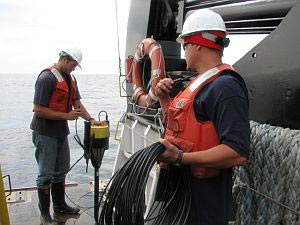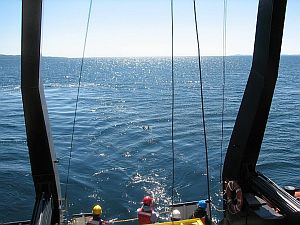
Dr. Alan
Weidemann, Faculty, of the Naval Research Laboratory, Stennis
Space Center, Mississippi launching a device to compare data
from satellites to what could be measured on location.
|

The device is used to compare data
from satellites to what could be measured on location.

Mr. David
O'Donnell, Researcher from the Upstate Freshwater Institute,
Syracuse, NY, checking the live data feed from the optics
instrument. |